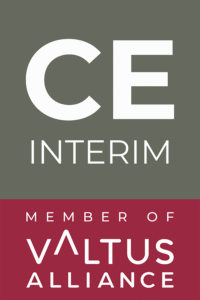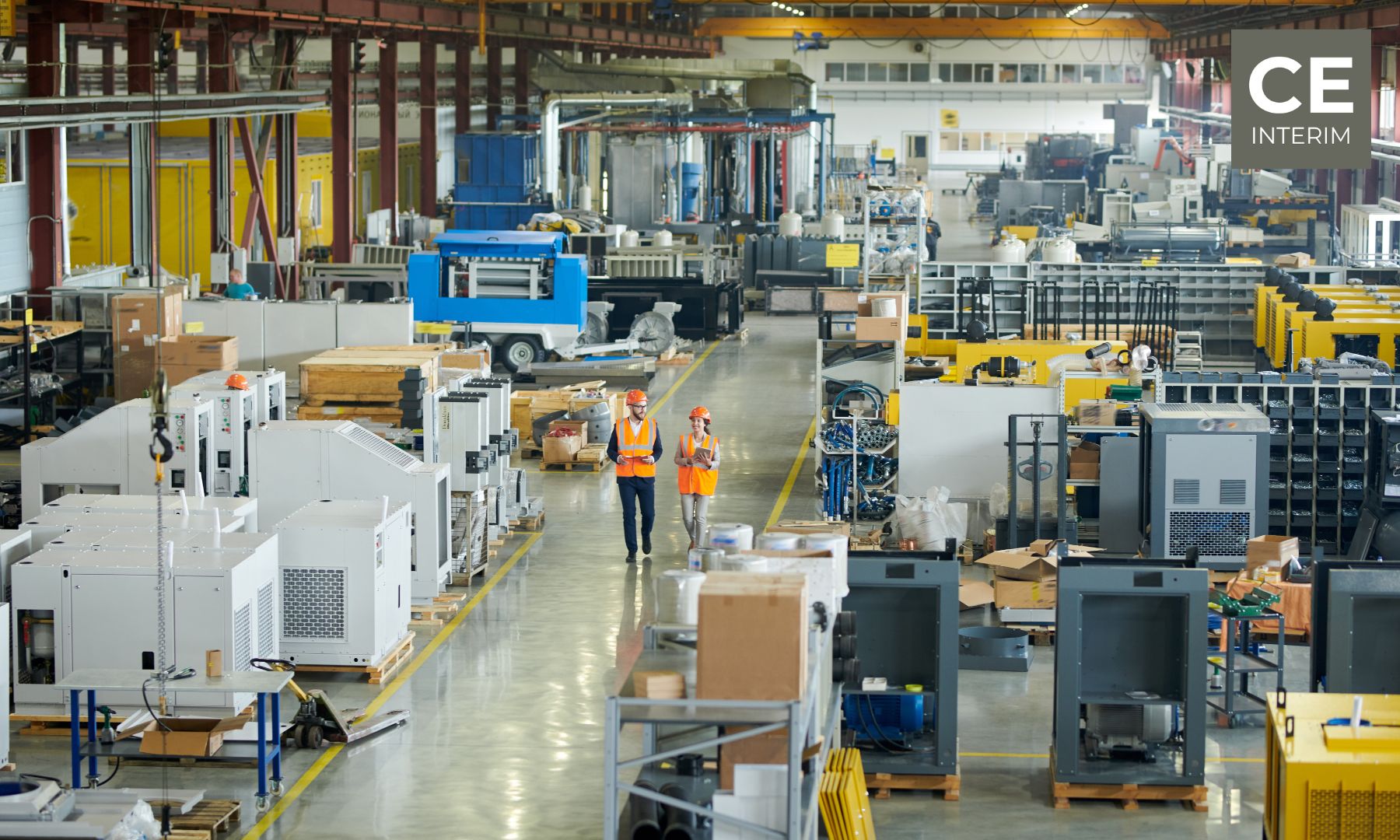Nincs elég ideje elolvasni a teljes cikket? Hallgassa meg az összefoglalót 2 percben.
A gyár áthelyezése több, mint a berendezések és gépek egyszerű felszedése és más helyre történő áthelyezése. Gondos felmérést és tervezést, a terv szakaszos megközelítést, valamint a költözés utáni folyamatos nyomon követést és optimalizálást igényel. A gyártóüzem áthelyezési folyamatának másik kulcsfontosságú szempontja az érdekelt felekkel és a munkavállalókkal folytatott átlátható kommunikáció.
Segít a zökkenőmentes koordinációban a gyár áthelyezésének különböző lépései során, a felmerülő aggályok kezelésében és az akadályok megelőzésében. Az ezeket a szempontokat figyelmen kívül hagyó vállalatok termelési zavarokkal, magas költségekkel, valamint elégedetlen alkalmazottakkal és ügyfelekkel szembesülnek.
Ma az üzem áthelyezés minden gyakorlati szempontját ismertetjük, hogy segítsünk Önnek a helyes stratégia követésében. A blog végére hozzáférhet egy teljes gyáráthelyezési ellenőrzőlistához, amely végső soron segít abban, hogy a gyártóüzem áthelyezési projektje hatalmas siker legyen.
A gyáráthelyezés gyakorlati szempontjainak megértése
A gyakorlati szempontok gyáráthelyezés a gyártási egység más helyszínre történő áthelyezésének valós, gyakorlati vagy alkalmazott elemeire utalnak, amelyekkel a vállalatoknak meg kell küzdeniük. Az üzem áthelyezés hatékony megtervezéséhez összpontosítson a gyakorlati szempontokra az aprólékos kivitelezés érdekében.
Egy bölcs vállalatvezető azonban tisztában van azzal, hogy az elmélet csupán bizonyos mértékig segíthet. Ha pusztán elméleti megközelítést alkalmaz, akkor teret enged a baleseteknek, és a hibái tanulságul szolgálnak mások számára. Ehelyett, ha gyakorlati tapasztalatokból tanul, a siker esélye exponenciálisan nőhet.
Ebben a tekintetben egy átfogó gyáráthelyezési ellenőrző lista elkészítése és a következő cégek segítségének igénybevétele interim menedzsment cégek gyors és hatékony megoldás lehet az akadályok azonnali kezelésére. De előtte jobb, ha vetünk egy pillantást a gyáráthelyezés gyakorlati szempontjaira, amelyekre összpontosítania kell:
Kezdeti tervfejlesztés
A kezdeti terv kidolgozása az első lépés a gyár áthelyezési folyamatában. Kezdje a gyártóüzem áthelyezési igényeinek, a mozgási célkitűzéseknek és a céloknak megfelelő lehetséges helyszíneknek felmérésével. Ezután következik a költségvetés-tervezés és a költségbecslés fázisa. Figyelembe kell vennie az összes közvetlen és rejtett költséget, például a csomagolási és szállítási költségeket, a létesítmény felállítását és az állásidőt.
Szánjon annyi időt a tervezési fázisra, amennyi szükséges, és vonja be a legfontosabb érdekelt feleket idejekorán. A projektre vonatkozóan dolgozzon ki egy reális ütemtervet a legfontosabb mérföldkövek és határidők meghatározásával. A vállalat követelményeihez igazított gondos tervezés kulcsfontosságú a sikeres átálláshoz.
Az új helyszín véglegesítése
A megfelelő helyszín kiválasztása döntő fontosságú a gyáráthelyezési célok eléréséhez. Alapos elemzést kell végeznie a lehetséges helyszínekről az alábbi tényezők alapján, mielőtt véglegesítené az egyiket:
- Helyi infrastruktúra és közművek.
- Jogi és szabályozási megfontolások.
- Közelség a beszállítókhoz és a vevőkhöz.
- Hozzáférés a kulcsfontosságú piacokhoz és szállítási útvonalakhoz.
- A munkaerő költsége és minősége.
- Jövőbeni bővítési lehetőségek.
Az a helyszín, amely megfelel az üzleti célok eléréséhez szükséges kritériumoknak, tökéletes helyszín lesz a gyártóegység áthelyezéséhez.
Munkaerőgazdálkodás és támogatás
Munkaerő-gazdálkodás a következő fontos szempont, amelyet a vállalatok gyakran elhanyagolnak, pedig ez a munkavállalók elégedetlenségéhez és a működés zavarához vezethet. Meg kell értenie a tehetség aggályait, foglalkoznia kell velük, és hatékony kommunikációs stratégiát kell követnie, amely puszta átláthatósággal jár. Az is előfordulhat, hogy áthelyezési támogatást és csomagokat kell felajánlania a gyártóegységgel együtt költöző alkalmazottaknak.
Ha az áthelyezés során a meglévő berendezéseket és gépeket korszerűsítette vagy megváltoztatta, akkor erről tájékoztatnia kell a meglévő személyzetet. Ha szükséges, vállalatának helyi tehetségeket kell toboroznia az új telephelyen, majd az ő képzésüket az Ön berendezéseire és folyamataira vonatkozóan.
Leltározás és eszközgazdálkodás
Mielőtt mindent összepakolna a költözéshez, alaposan át kell vizsgálnia leltárát és eszközeit. Ne feledkezzen meg arról, hogy az egyéb eszközökkel együtt magával vigye üzleti nyilvántartásait, forgalmazási terveit és minőségirányítási rendszereit is. Az auditálás után megfelelően kategorizálnia kell a tételeket, majd a szállításhoz megfelelő csomagolást és címkézést kell végeznie.
Ez megakadályozza a szállítás közbeni esetleges sérüléseket, a könnyű azonosíthatóságot, és elkerülhetővé teszi a csomagolás, az áthelyezés és a kicsomagolás közbeni késedelmeket.
Kockázatelemzés és -kezelés
A szilárd kockázatkezelési terv megléte a kezdetektől a befejezésig egy másik lényeges szempont, amelyet a vállalatok figyelmen kívül hagynak. Előre nem látható körülmények bármikor felmerülhetnek, különösen a szállítás és a fuvarozás során.
A vészhelyzeti tervek beépítése a stratégiájába segíthet a lehetséges akadályok kezelésében, különösen akkor, ha a vállalat válsághelyzetben van. A megfelelő kockázatelemzéshez és -kezeléshez igénybe veheti az ideiglenes menedzserek vagy vezetők segítségét, mivel ők a vészhelyzeti tervek kidolgozásának és végrehajtásának szakértői.
Létesítmény beállítása és a berendezések telepítése
A következő kulcsfontosságú lépés az új létesítmény előkészítése és az elrendezés megtervezése. Biztosítania kell, hogy a szükséges közművek, infrastruktúra és engedélyek rendelkezésre álljanak. Ezt követően beállíthatja az informatikai infrastruktúrát és a biztonsági rendszereket, és folytathatja az adatmigrációt. Ütemezze a berendezések telepítését és felügyelje az eljárást.
Ha ez megtörtént, végezzen rendszeres tesztelést és kalibrálást, hogy biztosítsa a munkafolyamatok kezelését és a folyamatok optimalizálását. Győződjön meg arról, hogy a létesítmény megfelel az összes biztonsági előírásnak, és megfelel az új helyszín irányelveinek.
Működési átmenet figyelemmel kísérése
Amikor az átállás véget ért, és az új létesítményt felállították, itt az ideje, hogy elvégezzék az áthelyezés utáni értékelést, hogy felmérjék, hogy a dolgok az eredeti terv szerint alakultak-e, és hogy meghatározzák a javítandó területeket. Létfontosságú néhány kísérleti teszt lefuttatása az operatív átállás nyomon követése és a felmerülő hiányosságok kijavítása érdekében.
A dolgozók, ügyfelek és beszállítók visszajelzéseit is kikérheti, hogy felmérje elégedettségüket, és foglalkozzon aggályaikkal. Az áthelyezés hosszadalmas folyamat, amelynek hosszú távú hatásai vannak. Ezek folyamatos nyomon követésével alapvető optimalizálásokat végezhet az átállás minőségének fenntartása érdekében.
A sikeres átmenet biztosítása
A gyáráthelyezés gyakorlati szempontjainak világos és mély megértése segít a kockázatok és a leállások minimalizálásában, a költségek ellenőrzésében és a működési hatékonyság fenntartásában.
Egy átfogó gyáráthelyezési ellenőrző lista felhasználásával és pontos követésével a vállalatok részletes tervezést, hatékony kommunikációt és az átmenet stratégiai irányítását végezhetik.
Kiváló megközelítés lenne itt egy képzett ideiglenes menedzser alkalmazása, aki segíthet a vállalatnak hatékonyabban átnavigálni a gyáráthelyezés bonyolult folyamatain.
Ez lehetővé teszi, hogy az átmenet összhangban maradjon a vállalat célkitűzéseivel, és minimalizálja a zavarokat. Az ideiglenes menedzserek olyan projektekre specializálódnak, mint a gyár vagy a gyártóüzem áthelyezése. Szakértelmüket kihasználva a vállalatok minimális erőfeszítéssel, erőforrásokkal és állásidővel sikeresen áthelyezhetik termelésüket különböző helyszínekre.
Végső gondolatok
A ma tárgyalt szempontokra való összpontosítás segít a vállalatnak a hatékony stratégiaalkotásban, a tervek könnyed kivitelezésében és a gyártóüzem áthelyezésének zökkenőmentes lebonyolításában.
Egy jó hírű interim manager cég segítségét kérve a gyártóüzem áthelyezése biztosítja, hogy a gyár áthelyezésének ellenőrző listája megfelelően kipipálva legyen.
Ez megakadályozza a működés megszakadását, minimalizálja az állásidőt, és erőforrásait a hosszú távú üzleti célokra összpontosítja. Szeretné gyárát precízen áthelyezni a kulturális érzékenység megőrzése mellett? A CE Interim itt van, hogy segítsen.
Mi vagyunk az Ön szakértő partnere a kultúrák közötti interim menedzsment megoldások terén. Tapasztalt interim menedzsereink zökkenőmentes átmenetet biztosítanak és optimalizálják a működési hatékonyságot. Profitáljon a különböző kultúrák közötti összetett átmenetek kezelésében szerzett széles körű tapasztalatainkból.
Akár a logisztika racionalizálása, a termelési képességek javítása, akár a stratégiai előnyök kihasználása érdekében mozog, mi minden lépésnél segítünk Önnek. Fedezze fel, hogy kultúrákon átívelő szakértelmünkkel hogyan segíthetjük vállalkozását személyre szabott interim menedzsment megoldásokkal. Töltse ki Kapcsolat űrlap még ma, hogy megbeszéljük a gyár áthelyezési igényeit, és bizalommal induljon el a növekedés és a hatékonyság útján.
Készen áll arra, hogy elsajátítsa ezeket a gyakorlati szempontokat, és kikövezze az utat a működési kiválóság felé?





